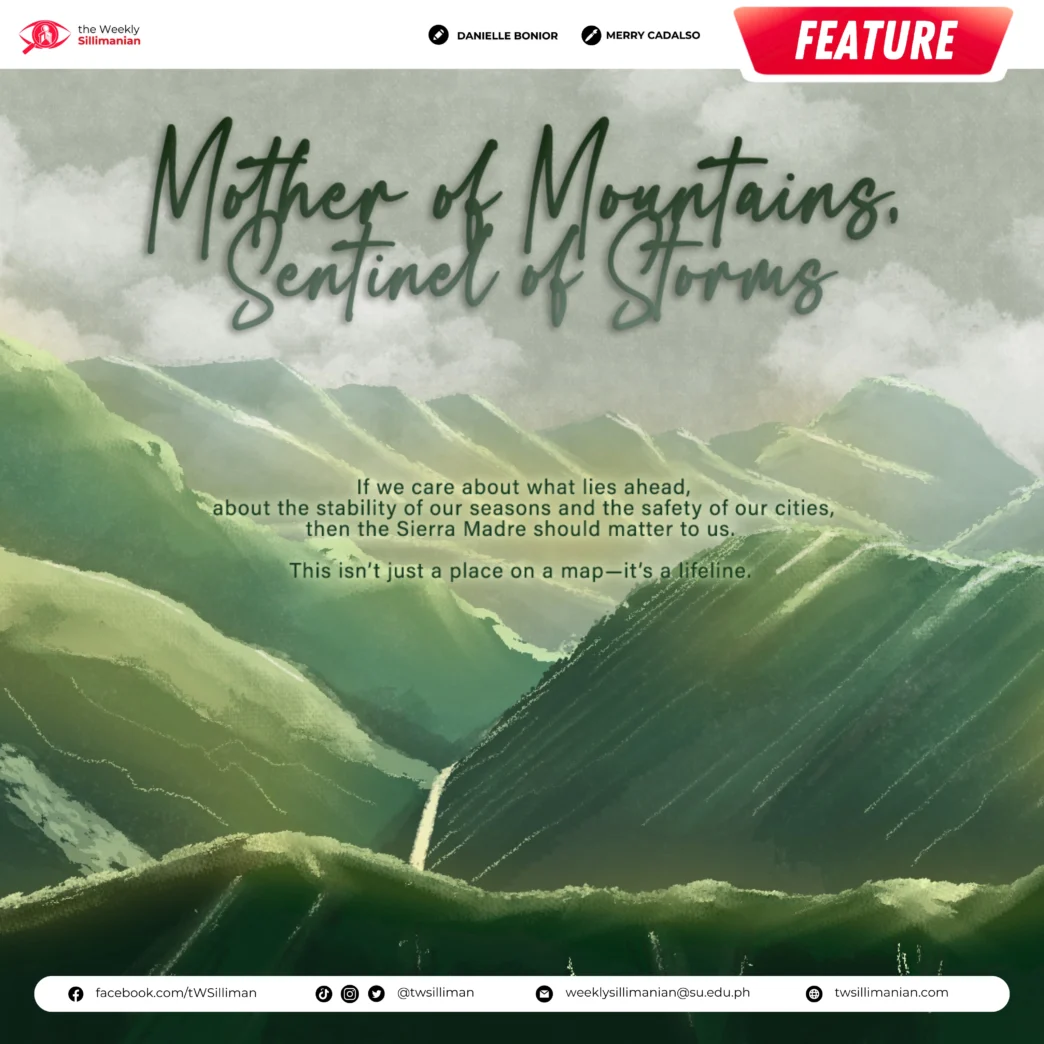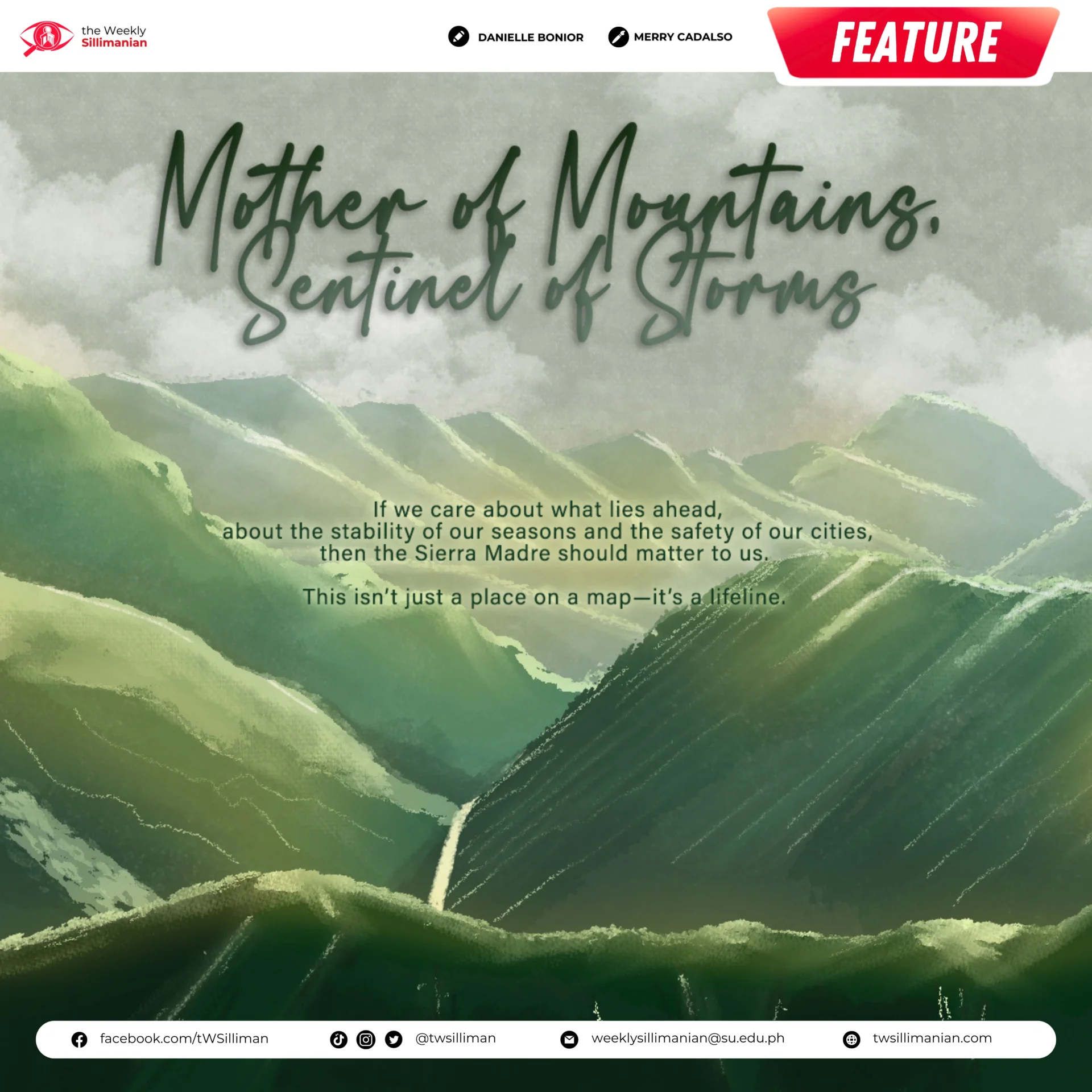By Danielle Bonior
Sierra Madre—“Mother of Mountains.” Stretching across Luzon akin to a primordial emerald-scaled serpent, the Sierra Madre cradles her provinces like children, protecting them from the fury of wind and storm. In her rugged embrace, towns and cities lie sheltered, held close by towering peaks and dense forests that absorb the worst of nature’s wrath.
Of towering green heights and wild landscapes stretching across 1.4 million hectares, the Sierra Madre is the Philippines’ unsung hero.
Rising along Luzon’s eastern spine, it cradles the provinces of Cagayan, Isabela, Nueva Vizcaya, Quirino, Nueva Ecija, Aurora, Bulacan, Rizal, and Quezon, offering them shelter from the relentless typhoons that carve their path toward the country every year.
In a journal article released in 2021, scientists Joseph Basconillo and Il-Ju Moon reported a 210 percent increase in typhoons and a 480 percent increase in tropical cyclone occurrences in the Philippines from 2012 to 2020.
In a season when over a dozen storms have already lashed the country, we may wonder: how much worse would it be without our inang kalikasan standing in the way?
Dubbed the “Backbone of Luzon,” the Sierra Madre isn’t just a line on the map; it’s a world teeming with life.
It acts as many of our Philippine endemic creatures’ sanctuary and last stand—like the majestic Philippine eagle soaring through the mist and the shy Philippine deer roaming in hidden clearings. This ancient mountain range hosts a rare slice of the country’s biodiversity, bringing sanctuary to about 40 percent of the Philippines’ endemic species.
Its trees, thick and timeless, drink the rains and hold back floods, creating rivers that wind down to feed the lowlands, supporting towns and cities alike.
But there’s something more hauntingly beautiful about the Sierra Madre: its silent strength.
As typhoons barrel through the Pacific and hit Luzon’s shores, the Sierra Madre stands ready, absorbing much of the force. Its peaks and forests catch the winds and break up the storm clouds, buying precious time for the people below to prepare.
It’s our natural defense, a shield woven from roots and rocks, an unyielding remnant of Philippine history and beauty—providence incarnate, unceasingly selfless in touch.
And yet, this shield is slowly cracking. The Inquirer (2021) reports that the Sierra Madre, which once covered nearly 92% of the country’s forest area, has seen its forest cover reduced to less than 10%.
Deforestation, mining, and creeping development eat away at its edges, thinning the very defenses that protect millions of lives. Satellite images have shown a consistent decline in forest cover over the years, with about 47,000 hectares lost annually to illegal logging and land conversion.
If we care about what lies ahead, about the stability of our seasons and the safety of our cities, then the Sierra Madre should matter to us.
This isn’t just a place on a map—it’s a lifeline.
Let us hold on to it, not as a distant idea but as an ally, a green wall that watches over us all. By protecting the Sierra Madre, we protect our future, preserving not only its ecological importance but also its cultural and historical significance for generations to come.
As the birth of a new dawn breaks the dusk of yesterday’s devastation, the unmistakable march of time carries with it the byproducts of capitalism and the sin of human greed—the destruction of nature that comes with expanded industrialization and heedless overconsumption.
As climate change progresses at thrice the rate since 1850, rainfall and wind speeds progress at the same rate we trudge towards our planet’s destruction. Its approach unstoppable, event indomitable, and effects catastrophic, if it were not for our Sierra Madre.
Here’s to our Mother, Sentinel of Storms, omnipotent titanesse against the catastrophe of storm—ever-dwindling, bereft from our disinterest and apathy.
As our Sierra Madre shelters, let us be the sword sworn to shield. As her loving children, let us enact the changes that seek to protect she who has harbored, for us, a thousand cyclones.










